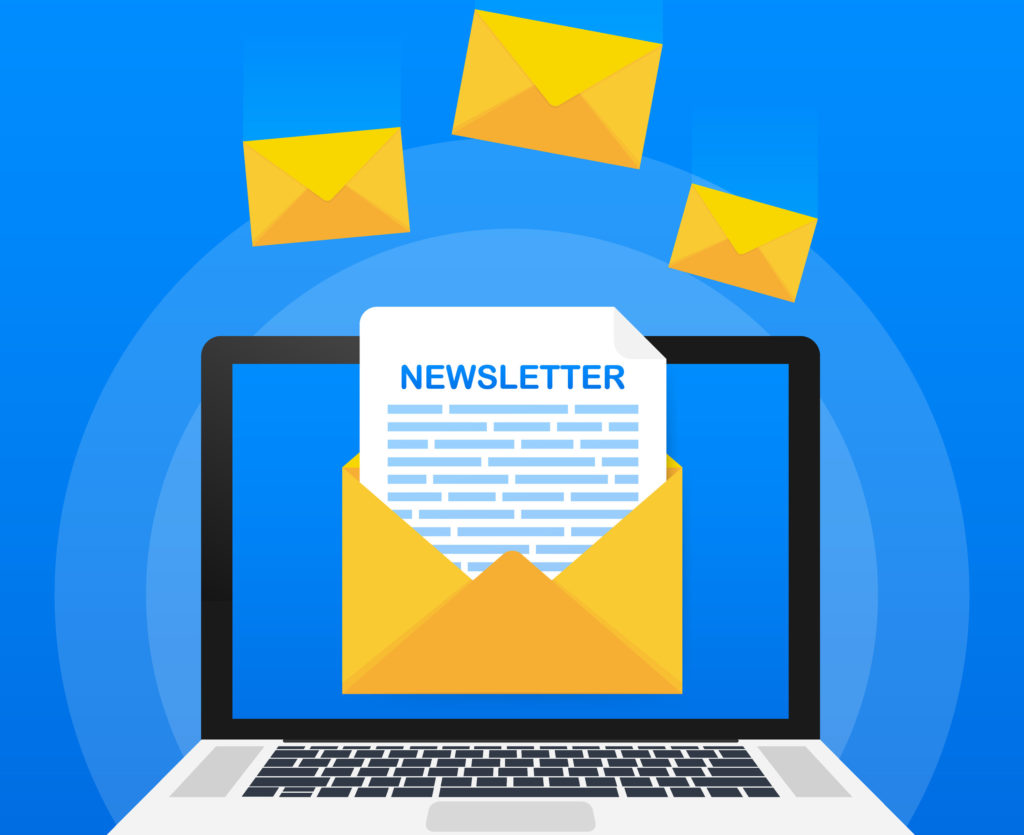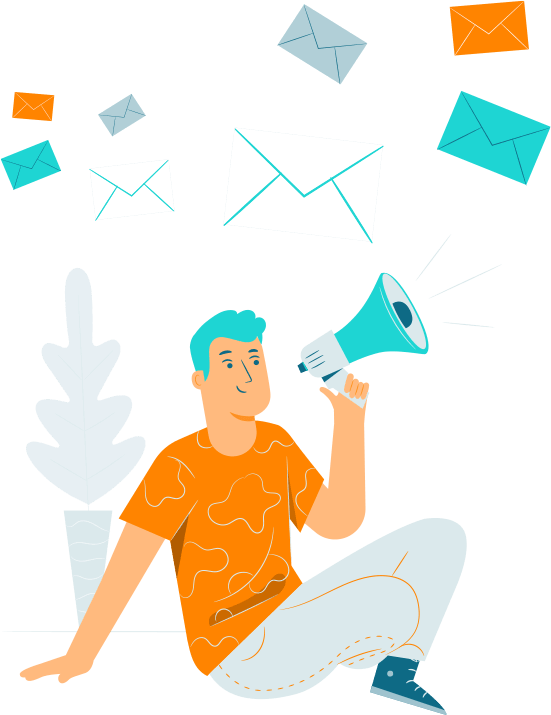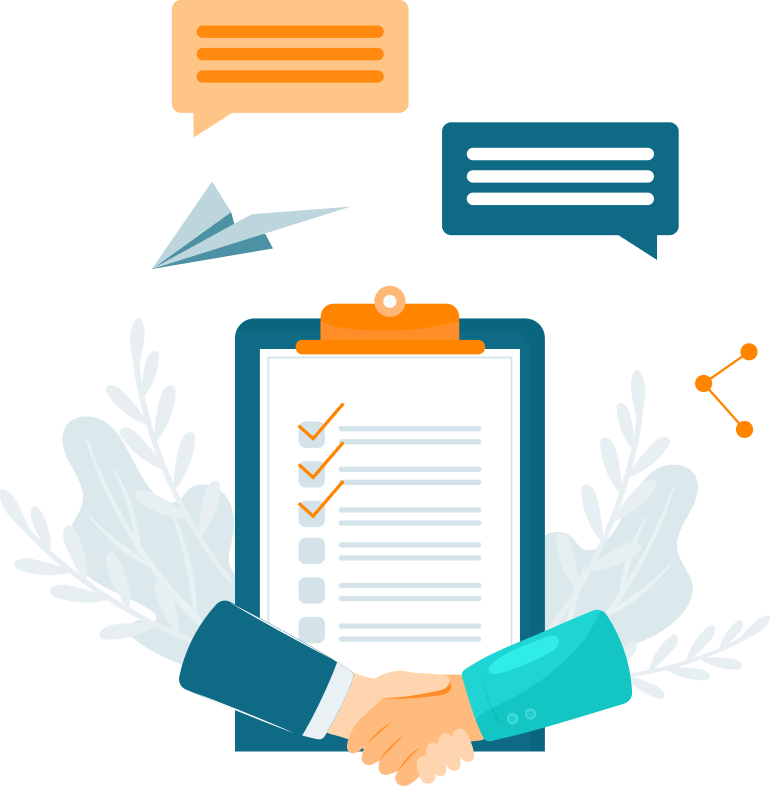One of the most powerful tools that any small business can have in their arsenal is their email newsletter. While some MSP owners may look at their newsletter as just “one more thing” they have to do, if you do it right, it can be a profitable way to market that costs very little.
In fact, email marketing has one of the best ROIs of any other method. According to email platform Constant Contact, for every $1 spent on email marketing, you can expect an average return of $38. Eighty percent of professionals say email marketing not only helps you acquire new customers but also keep them.
So, how can you get the most out of your email marketing efforts?
Here’s How to Do Email Newsletters the RIGHT Way!
A whole genre of marketing, the lead magnet, is designed just to get that all-important user email address. Once you have those emails, your email newsletter can ensure you put them to good use and don’t miss any marketing opportunities.
IT services happen to have the third best email open rate by industry, right behind pet services and architecture/construction. Meaning, there is a lot of opportunity to drive sales and repeat business if you do them right.
Decide What’s Going in Your Newsletter
If your newsletter just contains whatever’s in your head the day you write it, without any master plan, not only will it look less professional, it’s going to be more of a chore to write regularly.
Consistency fosters trust. So, if readers know what to expect and see a consistent type of content, sent consistently, they’ll automatically put more trust in your company.
An example of some standard sections you may want to include in a tech business newsletter would be:
- A computer productivity tip
- Employee or customer highlight
- New software/application to check out
- Newest website blog topic
- Sale promotion of the week
There’s also nothing wrong with adding what’s in your head that day too. Just make a section for it!
Use an Email Newsletter Platform
There’s no substitute for using a platform that is designed for sending email newsletters. The benefits are many, including:
- Easy to design and make a newsletter look appealing
- Inexpensive (or free in some cases)
- Provides code for adding signup forms to your website
- Can easily tag or segment your email lists
- Provides valuable reports on clickthrough rates, opens, etc..
- Gives users the ability to easily unsubscribe
- Can generate exit popup forms for signups
- Makes it easy to email to all subscribers at once
Here are three top email platforms to explore:
- Mailchimp (free up to 2,000 subscribers)
- Constant Contact (60-day free trial)
- GetResponse (30-day free trial)
Pay Attention to Branding and Design
Treat your email newsletter as you would a page on your website. Design and style are just as important in your emails. You want to ensure your company branding is displayed (such as your logo in the header or footer) and use the same color scheme used on your website, so your newsletter is instantly recognizable as coming from your company.
If you use one of the email services above, designing a good-looking email newsletter is going to be much easier because they offer multiple template options. Once you’ve chosen a template and edited it with your branding and colors, you can save it as your own customized template to use each time.
Make sure to use some engaging images and not just an all-text email.
Images increase a person’s desire to read content by 80%.
Tips for image use in emails:
- Use a header image to draw people in
- Use pictures of people (they’re shown to be most popular)
- Include images of your shop and team
- Don’t overuse stock photos
- Ensure images aren’t too big
Be Educational Rather Than “Salesy”
If your email newsletter is all about selling, then you’re going to turn your subscribers off pretty quickly. When someone’s hit their last email straw and is going through an unsubscribe frenzy, you want your newsletter to be the one they keep because it’s got great and interesting content.
Online marketing experts, Hubspot, recommend making your email newsletter 90% educational and 10% promotional. Of course, the point of marketing is to sell, but just do it as a supplement to the great and educational content so your readers will stay subscribed and engaged with your business.
Put Thought into Your Subject Line
Writing good subject lines follows the same school of thought as writing captivating headlines.
Often people will decide to open or not to open your email newsletter based upon the subject line. You want to put some thought into it so your email will stand out and use best practices as well to ensure your email isn’t caught by a spam filter.
One of the most famous uses of clever email subject lines was President Obama’s email newsletter team, who would use subject lines like “Hey” and “Michelle says hello” to get their emails opened.
Tips for killer email newsletter subject lines:
- Don’t make it too long (less than 40 characters is recommended)
- Ensure it matches the content inside (i.e. don’t bait and switch)
- Keep out spam alert words (“free” “buy now” “!!!!!!!”)
- Add a question (Looking for a better email app?)
- Be original and/or funny
- Use name or industry personalization
- Use an emoji (not too many, one is enough)
Use Engaging Signup Forms & Checkboxes
“Sign up for our email newsletter”
OR
“Get awesome computer tips and tech insights each week”
Which line above would be more likely to get you to subscribe to their email newsletter?
Use engaging language on your signup forms so people get excited about your content. If you’re planning to send your newsletter every week, you can also state that, so subscribers know what to expect. Many people will also be more likely to sign up if they know they’re not going to get spammed. (Don’t, worry! We won’t spam you!).
Gathering new emails to keep your list growing is important, so here are some ways to make it easy for people to sign up for your newsletter:
- A link in your website menu for newsletter signup
- An exit popup that invites them to sign up
- A check box on your contact form (Check for our eNewsletter tips & specials!)
- Put an iPad with an email signup form on your front counter

Add Occasional Sales Coupons or Specials
One of the main reasons people sign up for newsletters is to get a coupon. Some people will stay subscribed to emails newsletters for years, just so when they happen to need that product or service, they might be lucky get a discount by email.
Announcing a limited time coupon with expiration date in your email can be a great way to drive short-term revenue when you need it. Just use it sparingly, otherwise people will expect your services to always be on sale and the short-term coupon won’t be as effective.
Use a Call to Action
Just like you put a call to action on your website landing pages, you want to use one in your email newsletter too. It might be to contact your business for a free diagnostic or to follow you on your YouTube channel. Or, if you’ve offered a discount, “Get 10% Off Managed IT Now.”
Don’t miss the opportunity at the close of your newsletter to invite an interaction with one specific call to action.
Segment Your Lists
The more relevant your email is to the receiver, the more likely they are to stay on your list and engage with your content. If you serve both business and home customers, send a slightly different email newsletter to each one. The extra effort to tailor the content for each will be worth it.
Did you know? B2B email campaigns have click-through rates that are 47% higher than B2C campaigns.
If your IT business works exclusively with business customers, then you may want to segment by your main two industries and a generic bucket. For example:
Segment 1: Accounting/Financial Industry
Segment 2: Construction Industry
Segment 3: All other industries
Segmenting gets better results than non-segmented all around:
- 14.31% higher opens
- 100.95% more clicks
- 9.37% fewer unsubscribes
Follow CAN-SPAM Act & Best Practices
You want to ensure you’re following the rules of the FTC’s CAN-SPAM Act so you won’t have your email service suspended. Most businesses sending their email newsletter won’t have anything to worry about, but it’s good to know what to do so you won’t accidentally run afoul of the rule.
Some of the key points include:
- Telling recipients how to opt-out
- Honoring opt-out requests promptly
- Not using misleading statements in the subject line
- Including your address in the email
Other best practices that will keep you from having issues with MailChimp, Constant Contact or another email service include:
- Not uploading purchased lists to your email newsletter database
- Not getting too many bounces or spam complaints
Thresholds for warnings on bounce rates and spam complaints can vary, but Sender.net sets theirs at rates exceeding over 0.15% spam complaints and over 5% bounce rate.
See What is Working and A/B Test
Check your click-through and open rates after you’ve sent a few emails newsletters out to get a feel for which subject lines are working and which need improvement. Watching your reports will help you hone in on what your subscribers are responding to.
Many email services also give you the ability to A/B test, where you can send one subject line to a portion (say 10%) of your list and a different subject line to another 10% of your list to see which one gets the best response. Then it will automatically send the winner to the other 80% of your list.
Engage & Shine with Great Newsletters
Just a little planning and attention to design, consistency, and segmentation can turn a so-so email newsletter into one that subscribers look forward to each week, and one that brings in recurring sales.
What’s one of your biggest newsletter challenges? Is there a particular email platform that works well for you? We’d love to hear about it.


